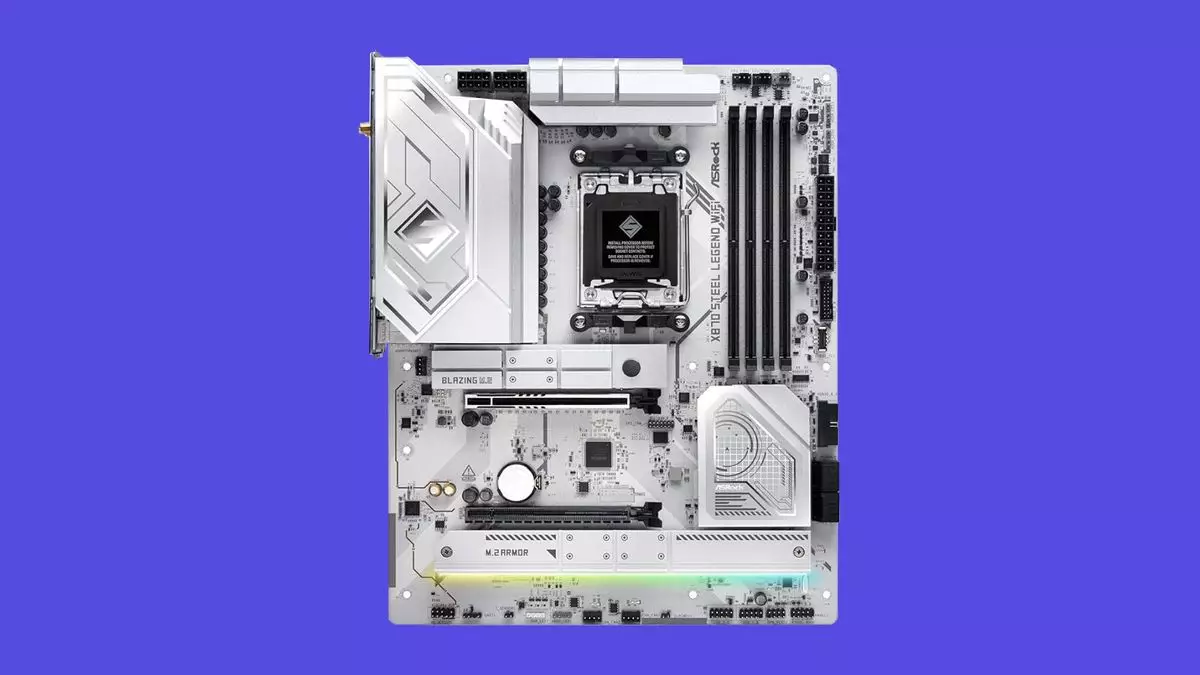In the world of technology, especially in the realm of hardware, reliability is paramount. However, the advent of alarming reports concerning burnt AMD Ryzen 9000 chips on ASRock’s X870 motherboards has not only raised eyebrows but also sent ripples through the tech community. As more users shared their tales of woe on platforms like Reddit, the question loomed: what was the underlying cause of these catastrophic failures? In a recent blog update, ASRock attempted to address the swirling concerns, shedding light on the circumstances surrounding one such motherboard that returned for analysis.
Crumbs of Clarity: Cleaning Up the Confusion
Often, the investigation of a technical debacle unveils surprising discoveries. ASRock revealed that the motherboard in question, which was said to have caused noticeable CPU burn damage, exhibited no significant marks or malfunctions upon custodian inspection. Instead, the technicians found an issue that bordered on the mundane: debris in the CPU socket. It’s a revelation that should provoke a sense of caution among enthusiasts and builders alike—while the primary focus is often on advanced technological inadequacies, even minor oversights like crumbs can lead to disastrous scenarios. The motherboard, after being thoroughly cleaned, managed to boot up successfully, suggesting resilience that could point to quality engineering amid unforeseen operational hurdles.
The BIOS Saga: Is It the Culprit or a Red Herring?
ASRock has also addressed the issue of certain X870 motherboards failing to recognize some Ryzen 9000-series CPUs. The company released BIOS version 3.20, claiming that it resolved memory compatibility problems that would otherwise prevent a successful boot. However, ASRock has been adamant in asserting that, regardless of BIOS version, no update could be responsible for causing damage to CPUs. This stance raises an interesting debate—does the issue lie solely in user maintenance, or is there a deeper flaw within the hardware or its compatibility settings?
What remains pivotal here is the tech community’s response to such claims. Users often perceive BIOS updates as direct solutions to underlying problems. Still, ASRock’s insistence on isolating the issue away from BIOS revisions could indicate an awareness of potential ramifications if users erroneously correlate firmware updates with hardware failures.
Taking Responsibility: Engagement with Affected Users
ASRock acknowledges the seriousness of these reports, emphasizing a proactive approach to engage with the affected users. This outreach effort aims to gather vital information from consumers who experienced failures, holding the potential to identify patterns or recurring themes that may add depth to understanding this unfolding issue. The notion that a motherboard manufacturer would actively seek dialogue with its user base speaks volumes about its commitment to customer service and accountability, particularly in an industry where consumer trust can be fragile.
Furthermore, the company’s transparency in sharing findings is commendable. However, despite ASRock’s efforts to inspect and analyze returned motherboards, the lack of clarity regarding whether a pervasive problem exists across different models leaves room for speculation and concern. If a broader pattern of malfunction exists, it is essential for the company to take decisive action to rectify potential flaws.
Looking Ahead: Engineering in the Face of Challenges
The incident serves as a stark reminder of how complex and fragile the relationship between hardware components can be, where even a seemingly innocuous factor like dust or debris can lead to system failures. ASRock’s latest blog post illustrates engineering resilience, yet simultaneously highlights the necessity for diligence in product testing and consumer awareness.
As tech enthusiasts and builders work to optimize their setups, the emphasis should not merely rest on selecting the best components but also on understanding the holistic ecosystem that these components must operate within. The importance of maintenance and vigilance cannot be overstated—after all, in the high-stakes world of PC building, success is often determined not just by the parts chosen, but by the care taken in their assembly and upkeep.

